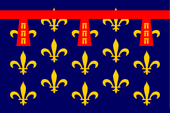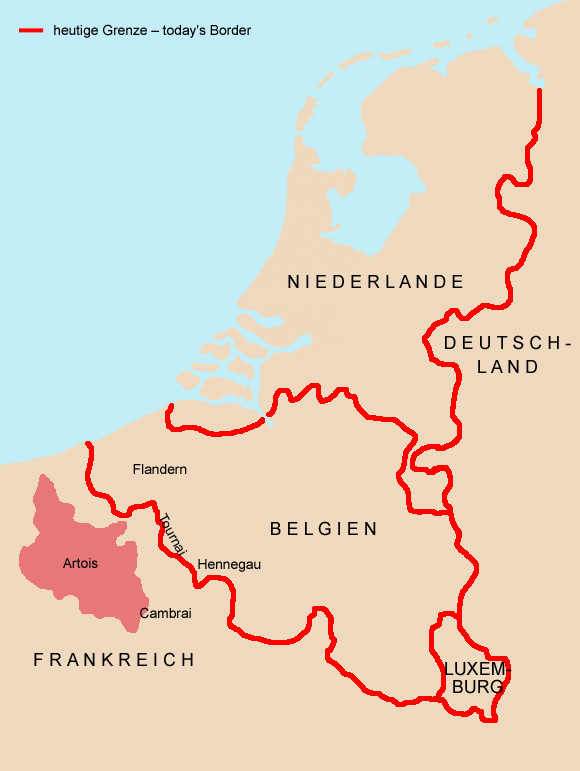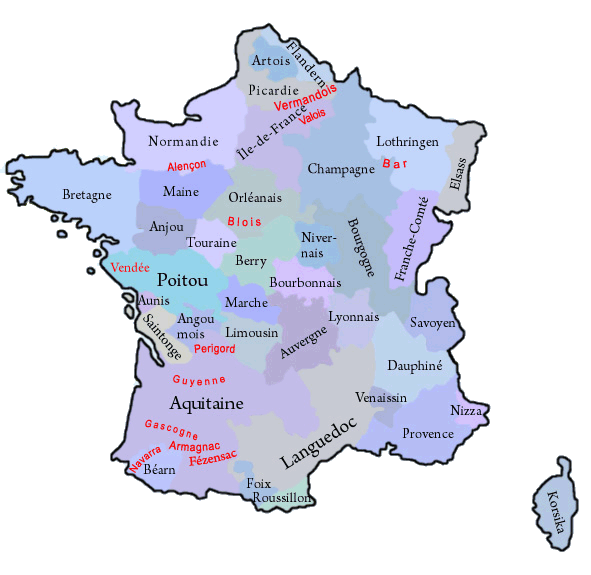mobile View, to the German Version tap the flag


- historical region in France
- former county and province
- own names:
Flemish: Artesië, French: Artois, German: Artesien
• Flag
• Meaning/Origin of the Flag
• Coat of Arms
• Meaning/Origin of the Coat of Arms
• Map of Artois
• Map of the historical Regions in France
• Explanations about the Regions
• Numbers and Facts
• History
• Origin of the Country's Name

Flag of Artois,
Source, by:
Die Welt der Flaggen




The flag of Artois is a scutcheon-flag, it shows the image of the coat of arms. Its design has its roots in the year 1237, when the country became a county of the Capetians.
Source:
Volker Preuß


1237–1384,
Coat of arms of Artois – Armoriaux de Artois,
Source, by:
Wikipedia (D)

When King Louis IX. of France in 1237, the county of Artois established again, he transferred it to his younger brother Robert. Ludwig and Robert are both sons of King Louis VIII., the Lion, and Blanche of Castile, so children of the compound of the dynasties of France and Castile. Therefore was created, a coat of arms for Robert, as the Count of Artois, which combined the heraldry of the Capetians of France with the heraldry of Castile. Thus the coat of arms of the Capetian was supplemented with a red tournament collar, which featured Robert as a younger son (following the rules of the French heraldry), and on its flaps appeared per three times a golden castle, the symbol of Castile. The coat of arms of the Capetians showed three golden lilies on blue, but originally was the coat of arms sprinkled with lilies. From 1365 (by others sources 1376), the number of lilies was reduced to three. The lily-symbol is very old, already the Germanic tribe of the Franks has used it.
Source:
Lexikon der Heraldik,
Volker Preuß,
Wikipedia (D)


Source: Volker Preuß

The historical, French Regions:

in black: governorate and province in 1776,
in red: former county, province oder governorate
Map: Volker Preuß

The until the French Revolution existing provinces (or governorates) have been historically grown structures, which had their roots oftenly in former fiefdoms of the French crown, historic counties and duchies. They oftenly existed for hundreds of years and had preserved regionality (e.g. cultural particularities and regional languages). On the occasion of the French Revolution such phenomena were of course not desirable, and as part of their bloody and violent egalitarianism any regional references were eliminated. Shortly after the French Revolution the provinces were dissolved and France became divided into many départements, which should have approximately the same size and the same status. The départements were named after rivers or mountains, to use never and in no circumstances the name of an old province. However, there was no success in cutting the connections of the people of France to their respective regions, so that administrative regions were re-created in 1960, to have a better control in regional administrative processes. In this way became départements, which were placed in a historical province, administratively grouped to an oftenly historically named region. The resulted structures coincide only approximately with the boundaries of the old provinces. In the strictly centralist France any regionality is avoided, so that even the official flags of these regions mostly look like flags of companies, unloving, unhistorical, technocratic and modernistic, and these flags should not be a subject of any lexical considerations here. Only in a few of that regions, exist official flags which remember the historical models. But, even the existence of these today's regions is douptful, because in 2014 was passed a territorial reform valid from the year 2016, that reduces the number of the existing regions by merging to nearly the half. However, there exist unofficial flags in nearly all of these regions, which should remember the old provinces and the old heraldry.
Wikipedia Link to the regions of France:
click or tap here
FOTW Link to the regions of France:
click or tap here
Source: Flags of the World,
Wikipedia (D),
Volker Preuß

The historical province of Artois today belongs to the region of Nord-Pas-de-Calais.
The Province:
Area: 1.186 sq.mi.
Inhabitants: 1.110.000 (2008)
Density of Population: 585 inh./sq.mi.
Capital: Arras, 41.600 inh. (2010)
official Language: French
Time Zone: GMT + 1 h
Source:
Wikipedia (FR)

antiquity · settlement by the Celtic tribe of the Atrebates
55 B.C. · Roman conquest
5th century A.D. · conquest and settlement by the Franks
481–863 · to the Frankish Empire, establish of the county of Arras (Atrecht, Artois)
863 · Judith, daughter of Charles the Bald, marries Baldwin Iron Arm the Count of Flanders, Artois comes as a dowry to the County of Flanders
880 · Treaty of Verdun and Ribbemont, at the division of the Frankish Empire comes Flanders (Westflanders, Crown Flanders) to the West Frankish Kingdom (France)
1180 · Isabella of Hainault , niece of Philip, Count of Flanders, marries Philip II Augustus, King of France, Artois comes as a dowry to France
1237 · King Louis IX . of France re-establishes the County of Artois , and hands it over it to his younger brother Robert, as Robert I. Count of Artois, founder of the line France-Artois
1384 · Artois comes through marriage to the Duchy of Burgundy
1477 · death of Charles the Bold, Duke of Burgundy, in the following years succession disputes
1482 · Peace of Arras, Artois comes to France
1493 · Peace of Senlis , Artois comes as a dowry for Margaret of Austria (daughter of Emperor Maximilian) to the House of Habsburg, becomes in this way a part of the Habsburg Netherlands, and a part of the German Empire too
1526 · Peace of Madrid, the French king Francis I. renounces Flanders and Artois
1529 · Peace of Cambrai , the French king Francis I. renounces Flanders and Artois
1559 · Peace of Câteau-Cambresis, the French King Henry II. renounces Flanders and Artois
1643 · Thirty Years' War, France conquers parts of Artois and the the capital Arras
1659 · Pyrenean Peace, Habsburg has to cede Artois to France, however Artois is equipped with some special rights of a estates state, what could be an own estates assembly (a kind of parliament) or may even mean an own tax jurisdiction towards the king
1776 · the already in the 14th century created governorates of the civil administration of the kingdom of France become committed to a number of 39, and correspond in this way to the number of provinces, in previous years could any provinces be summarized in one governorate
1789 · on the occasion of the French Revolution the estates-state of Artois and its respective privileges were abolished and the entire region was divided into two departments (Pas-de-Calais und Somme)
1960 · reintroduction of regions in France, Artois doesn't play a role, forming of the Nord-Pas-de-Calais region, of course not within the historic boundaries, just by integrating of the departments of Nord und Pas-de-Calais
2016 · the Nord-Pas-de-Calais region merges with the Picardy region in the new, larger region of Hauts-de-France
Source:
Wikipedia (D),
Brockhaus Konversationslexikon

The name of the Country "Artois" and also of its capital "Arras" (German: Atrecht) goes back to the Celtic tribe of the "Atrebates", who settled here at the time of Roman rule. The Latin name of the country was "Artesia", the source of the "Artesian Wells", which were built first here in 1126.
Source:
Handbuch der geographischen Namen,
Volker Preuß


![]()







